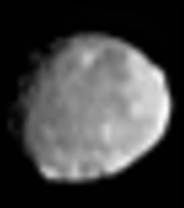
A NASA spacecraft is just 11 days away from a historic rendezvous with an asteroid the size of Arizona.
NASA's Dawn probe should enter into orbit around Vesta on July 16, becoming the first spacecraft to visit the 330-mile-wide space rock - the second-largest object in the main asteroid belt between Mars and Jupiter. Dawn is expected to spend a year studying the space rock from above, marking the first time a spacecraft has ever made an extended visit to a large asteroid.
Scientists hope Dawn's mission will help them learn about the early days of the solar system and the processes that formed and shaped rocky planets like Earth and Mars.
"Bodies like Vesta are building blocks," Dawn principal investigator Christopher Russell of UCLA told reporters in a recent briefing. "So we're going back and doing some sort of investigation into our roots, the roots of the solar system."
A long journey
Dawn is now in the home stretch of a nearly four-year cosmic chase. The probe launched in September 2007 and has logged about 1.7 billion miles during its travels. As of Friday, Dawn had closed to within 53,400 miles of Vesta, researchers said.
Dawn will be just 9,900 miles from Vesta when the space rock's gravity captures the probe on July 16. At that point, Dawn and Vesta will both be about 117 million miles from Earth.
The capture shouldn't be a dramatic, nail-biting affair punctuated by last-minute thruster burns. Dawn has been using its low-thrust ion propulsion system to close in on Vesta slowly but surely, and it should slide nicely into orbit on July 16.
The spacecraft will begin its science operations in early August, researchers said.
Studying a protoplanet
Vesta is so large that many scientists classify it as a protoplanet. The object was well on its way to becoming a full-fledged rocky planet long ago, scientists said, but circumstances intervened.
"The formation of Jupiter started stirring up that region of the asteroid belt and preventing materials from coming together any longer," Russell said.
So Vesta is a sort of time capsule, preserving some record of how the solar system came together 4.5 billion years ago.
"As we explore Vesta, we take a virtual journey back in time to the beginning of the solar system," said Carol Raymond, Dawn deputy principal investigator at NASA's Jet Propulsion Laboratory (JPL) in Pasadena, Calif.
During its year at Vesta, Dawn will map the giant asteroid's cratered surface fully, study its composition and investigate its geological history. It will do this from several different orbits, ranging from 1,700 miles above Vesta to just 120 miles, researchers said.
On to the next big thing
Dawn should wrap up its science work at Vesta in July 2012. But at that point, the probe's mission will only be half-finished. It will then jet off for another asteroid encounter, this time with the dwarf planet Ceres - the largest object in the asteroid belt.
Dawn should arrive at the 605-mile-wide Ceres in early 2015. The spacecraft's observations will allow scientists to compare the two giant bodies, which have been shaped by different forces, researchers said.
"The Dawn mission is unique in that we're going to be the first mission to rendezvous with not just one body, but two solar system bodies," said Robert Mase, Dawn project manager at JPL. "These are two of the last unexplored worlds in our inner solar system."
Source: Space.com



Reader Comments
to our Newsletter